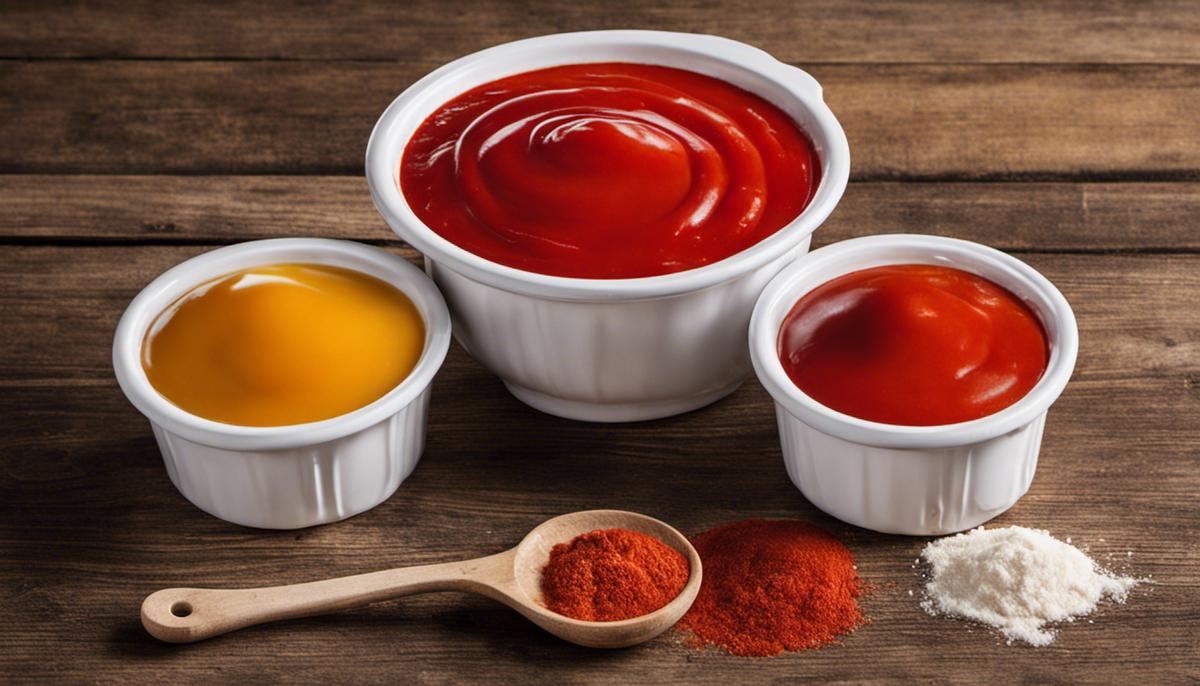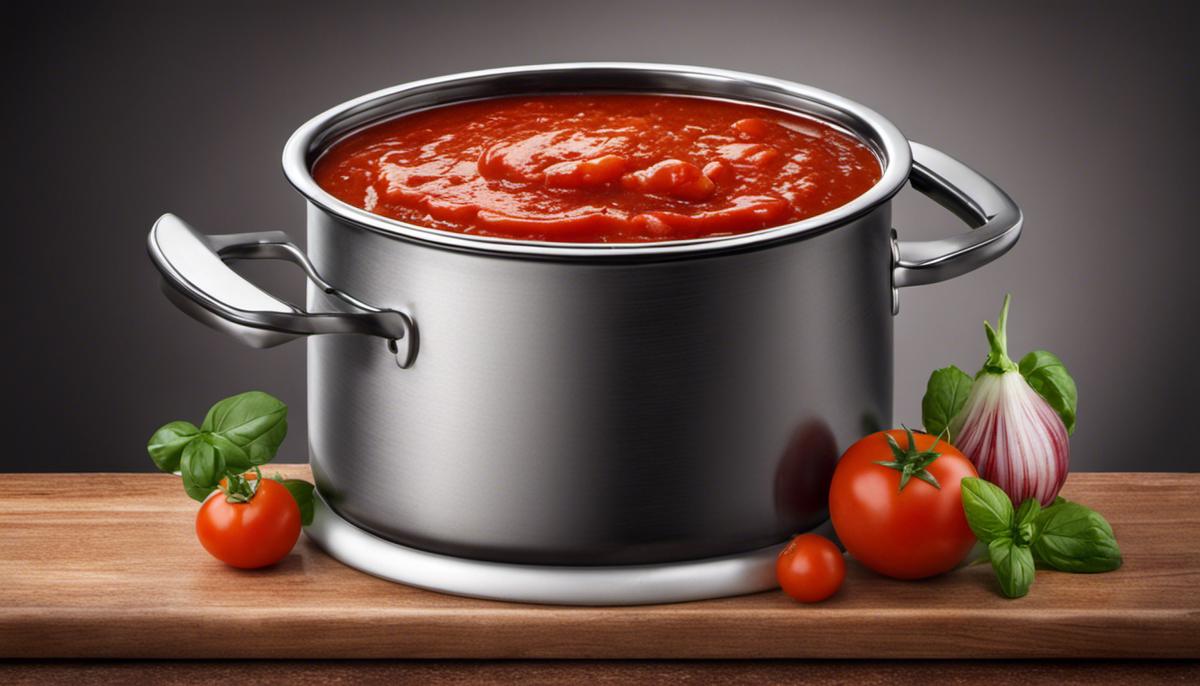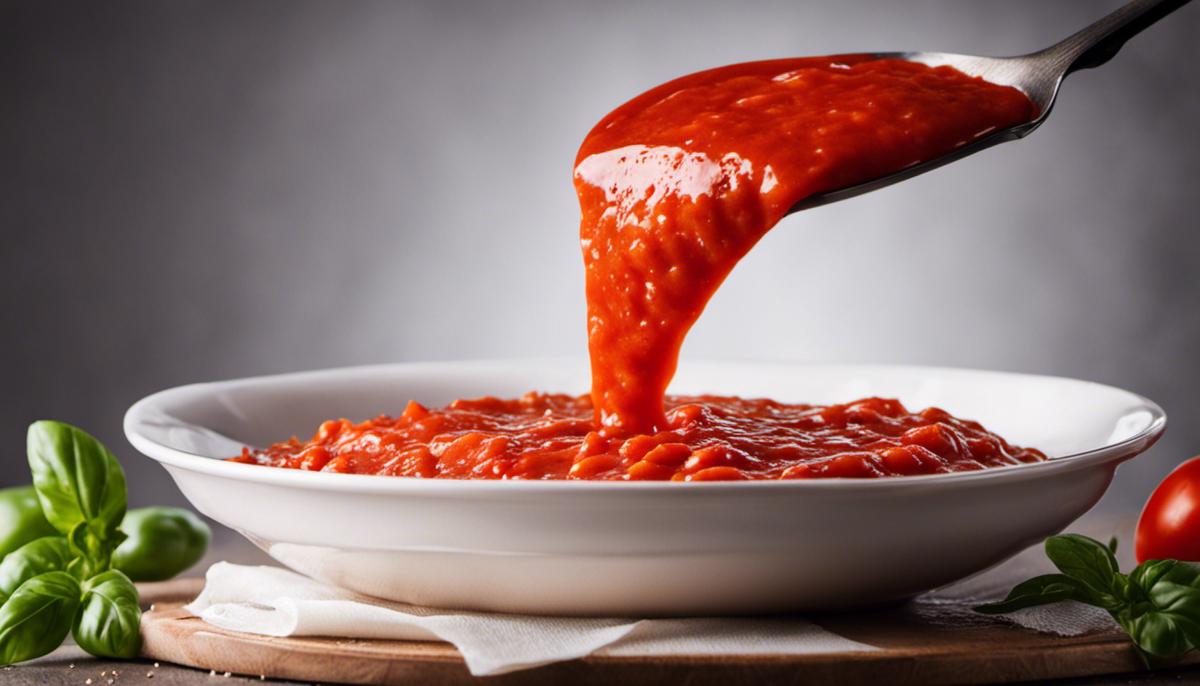Mastering the Art of Thickening Tomato Sauce
Creating the perfect consistency in a tomato sauce can enhance the overall flavor and presentation of your dishes. The thickening process requires a good understanding of different options for thickeners, each with its unique benefits, drawbacks, and techniques. By getting to know thickeners such as flour, cornstarch, tomato paste, and their interaction with the sauce, you will uncover the impact on both texture and taste. Beyond thickeners, we will also explore the crucial role of various cooking techniques, like slow simmering, evaporation, and reduction that can naturally thicken your tomato sauce. Grasping how different cooking durations and temperatures affect the thickening process is a crucial part of this culinary journey.
Understanding Different Thickeners
Understanding the Role of Different Thickeners: Flour, Cornstarch, and Tomato Paste
Flour, cornstarch, and tomato paste are common thickeners used in cooking. Their uses and effects vary, dependent on the dish at hand. A fundamental understanding of these ingredients is critical for achieving a beautifully thickened tomato-based sauce.
Flour: A Versatile Thickening Agent
Flour is often used for thickening sauces due to its availability and simple use. To incorporate flour into your tomato sauce, a roux, equal parts of flour and fat (often butter), is made. The disadvantage of using flour is the potential for a raw flour taste if not sufficiently cooked out. Therefore, the roux must be cooked thoroughly before adding the tomato sauce. Flour does not alter the flavor of the sauce significantly, but it can slightly dilute the overall taste. The thickness it provides depends on the amount used. Generally, one tablespoon of flour will thicken one cup of liquid moderately.
Cornstarch: A Potent Thickener with Restraints
Cornstarch, made from the endosperm of corn kernels, is a powerful thickening agent. It works by absorbing water and expanding. However, this interaction with the sauce’s liquid can sometimes result in a glossy, gel-like consistency, which may not be suitable for all types of tomato sauces. Additionally, a major drawback of cornstarch is that it does not interact well with acidic ingredients, like tomatoes, which can potentially break down the thickening agent. Cornstarch also imparts no flavor to the sauce, yet offers a strong thickening power, more so than flour.
Tomato Paste: Adding Depth and Thickness
Tomato paste, made by cooking tomatoes down to a thick, concentrated form, serves two purposes in thickening tomato sauce: it reduces the liquid content and intensifies the existing tomato flavor. The only potential drawback is obtaining too strong a tomato flavor if overused. It seamlessly interacts with the sauce since it’s made of the same primary ingredient—tomatoes. The thickness it provides is substantial but not as pronounced as that of flour or cornstarch. It’s an ideal choice when you want to amplify the tomato flavor while passively thickening the sauce.
Effective Usage of Thickening Agents
Each of these thickeners has its merits, detriments, and distinct usage techniques. Flour is a versatile and an easy-to-use thickening agent. Cornstarch offers potent thickening but doesn’t always interact well with acidic ingredients. Tomato paste, while it does provide thickness, is primarily used for flavor enhancement, providing an intensified tomato taste to the sauce. Mastering these elements will ensure a perfectly thickened tomato sauce that caters to your preferred taste and consistency.

Cooking Techniques for Tomato Sauce
Understanding the Basic Techniques: Slow Simmering, Evaporation, and Reduction
The first basic technique to thicken tomato sauce is slow simmering. Slow simmering helps to evaporate excess water from the sauce, thus thickening it. This process involves letting your tomato sauce cook on a low heat for a longer duration. The low heat ensures that the sauce does not burn while the extra moisture evaporates.
Another technique is evaporation. Turning up the heat allows more water to evaporate, condensing the sauce down into a thicker consistency. However, be cautious to not let the sauce cook too quickly, as this can lead to burning. Stir the sauce frequently to ensure it cooks evenly and the bottom doesn’t stick to the pan.
Reduction is the third technique commonly used to thicken tomato sauce. This is a process wherein the sauce is boiled or simmered until its volume reduces due to evaporation. The reduced volume not only thickens the sauce but also concentrates the flavors to make it richer.
How Cooking Durations and Temperatures Affect the Thickening Process
Understanding the relationship between cooking durations and temperatures is crucial in achieving the right sauce consistency. The longer the cooking time and the lower the heat, the more the water will evaporate, hence thickening the sauce. This method is slow and gentle, allowing the flavors to develop over time without scorching the sauce.
On the other hand, higher temperatures speed up the evaporation process but require more vigilance. The sauce will thicken quicker, though you run the risk of uneven cooking and potential burning if not stirred regularly.
In summary, to thicken tomato sauce one can rely on slow simmering, evaporation, or reduction techniques. Each method requires a keen understanding of how duration and temperature play with the evaporation process. With patience and practice, achieving a perfectly thickened tomato sauce will easily be within reach.

Practical Application and Experimentation
Understanding Different Thickeners
To thicken tomato sauce, various ingredients and methods can be used. Typical thickening agents include cornstarch, flour, and even vegetable purees. Cornstarch and flour are commonly combined with water to create a slurry before being added to the sauce. This helps to prevent clumps and evenly distribute the thickening agent throughout the sauce. Vegetable purees, like carrot or potato, offer the added benefit of providing extra flavors and nutrients to the final product.
Cooking Techniques
Aside from thickeners, your cooking technique can also help thicken your tomato sauce. Reducing the sauce by simmering it on low heat can evaporate excess water content and thereby naturally thicken the sauce. Remember that this process can take a longer time and requires constant stirring to avoid burning the sauce.
Practicing Through Preparation
After understanding thickeners and cooking techniques, prepare a basic tomato sauce for practice. You can start with a simple recipe of tomatoes, onion, garlic, and herbs simmered together. Observe how the sauce thickens naturally when simmered uncovered over a low-heat. Experiment with adding cornstarch or flour slurry towards the end of the cooking time and see how it impacts the texture and thickness of your sauce. Garden vegetable purees like carrot, butternut squash, or beet can also be a unique way to thicken tomato sauce.
Experiment and Take Notes
Experimenting with different combinations of thickeners and cooking techniques will help you find the best method that suits your personal preference and enhances your meal. For instance, if you prefer a smoother, more subtly thickened sauce, a vegetable puree might be your best choice. Otherwise, if you like a thicker, heavier sauce, a flour or cornstarch slurry could work better. After each experiment, take notes on the ratio of ingredients used, the cooking process, and the final result. Reflect on the aspects you liked and those you wish to improve.
Final Thoughts
Consider changing the order of adding ingredients, the ratio of thickening agents, or even introducing new ones to achieve the desired consistency. Remember, the goal is to create a sauce that balances taste, texture, and thickness to compliment your specific dish. Keeping a record of your experiments, adjustments, and outcomes can help you recreate your best sauce in the future and continue to refine your culinary skills.

After examining various thickeners and cooking techniques, you will get hands-on by preparing tomato sauce and utilizing the methods learned. This practical application and experimentation phase is where theory meets practice, allowing you to discover which combination results in the best thickness and flavor. This process of trial and error is not a one-time event, but an ongoing adventure in the kitchen. Keep reflecting and making notes on your findings. Every subtle tweak or change could be the key to your signature tomato sauce, delivering flavor that is uniquely yours.

